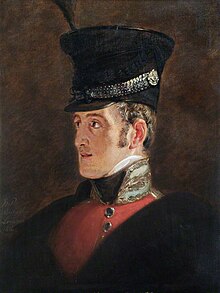The Lord Seaton | |
|---|---|
 Colborne in 1821, by Jan Willem Pieneman | |
| Nickname(s) | "Le vieux brûlot" ("the old fire-breather") |
| Born | 16 February 1778 Lymington, Hampshire, England |
| Died | 17 April 1863 (aged 85) Torquay, England |
| Allegiance | |
| Service | |
| Years of service | 1794–1860 |
| Rank | Field Marshal |
| Commands | 2nd Bn 66th Regiment of Foot 52nd Regiment of Foot Commander-in-Chief, Ireland |
| Battles / wars | French Revolutionary Wars Napoleonic Wars Canadian Rebellions |
| Awards | Knight Grand Cross of the Order of the Bath Knight Grand Cross of the Order of St Michael and St George Knight Grand Cross of the Royal Guelphic Order |

Field Marshal John Colborne, 1st Baron Seaton, GCB, GCMG, GCH, PC (Ire) (16 February 1778 – 17 April 1863) was a British Army officer and colonial governor. After taking part as a junior officer in the Anglo-Russian invasion of Holland, Sir Ralph Abercromby's expedition to Egypt and then the War of the Third Coalition, he served as military secretary to Sir John Moore at the Battle of Corunna. He then commanded the 2nd Battalion of the 66th Regiment of Foot and, later, the 52nd Regiment of Foot at many of the battles of the Peninsular War. At the Battle of Waterloo, Colborne on his own initiative brought the 52nd Regiment of Foot forward, took up a flanking position in relation to the French Imperial Guard and then, after firing repeated volleys into their flank, charged at the Guard so driving them back in disorder.
He went on to become commander-in-chief of all the armed forces in British North America, personally leading the offensive at the Battle of Saint-Eustache in Lower Canada and defeating the rebel force in December 1837. After that he was high commissioner of the Ionian Islands and then Commander-in-Chief, Ireland.